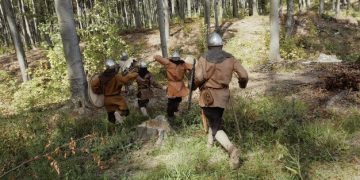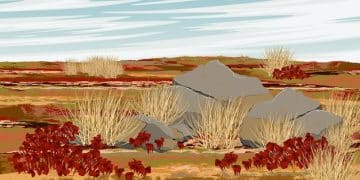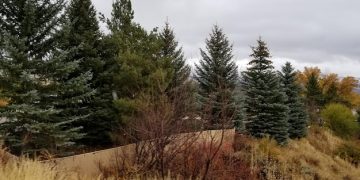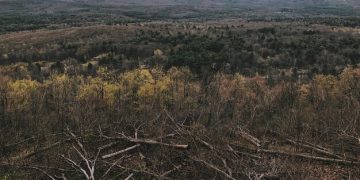Protecting Endangered Species Habitats: Latest US Strategies
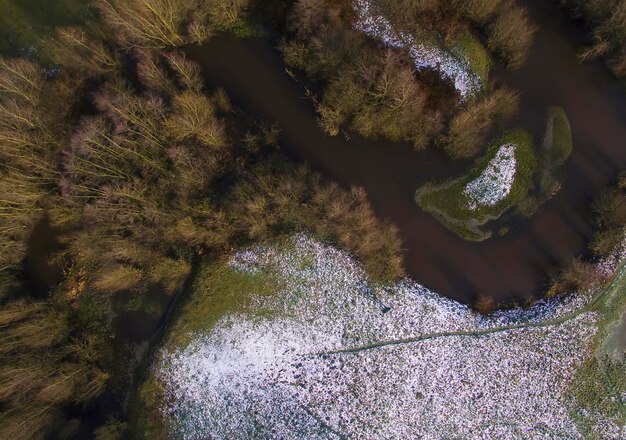
The latest strategies for protecting endangered species habitats in the US include habitat restoration, conservation easements, wildlife corridors, and community engagement programs, all aimed at preserving biodiversity and preventing further species decline.
The preservation of endangered species’ habitats is a critical component of maintaining biodiversity and ecological balance in the United States. What are the latest strategies for protecting endangered species habitats in the US? Let’s explore some innovative approaches that are making a difference.
Understanding the Urgency: Why Habitat Protection Matters
Endangered species face numerous threats, but habitat loss is arguably the most significant. Protecting and restoring these habitats is vital for the survival of these species and the health of our ecosystems.
Habitat protection is not merely an environmental issue; it has profound economic and social implications. Healthy ecosystems provide essential services, such as clean air and water, pollination, and climate regulation. When habitats are degraded or destroyed, these services are compromised, impacting human well-being and economic stability.
The Interconnectedness of Ecosystems
Ecosystems are complex networks of interactions between living organisms and their environment. Protecting a single species often requires protecting the entire habitat to which it belongs. For example, protecting the habitat of the endangered Florida panther requires maintaining large swaths of interconnected forests and wetlands, allowing them to roam and hunt.
- Biodiversity Hotspots: Identifying and prioritizing areas with high concentrations of endemic and endangered species.
- Ecosystem Services: Recognizing the economic and social value of healthy ecosystems in providing clean air, water, and climate regulation.
- Keystone Species: Understanding the crucial roles certain species play in maintaining the structure and function of their habitats.
By understanding the interconnected nature of ecosystems and addressing the root causes of habitat loss, we can develop more effective and sustainable conservation strategies.
Innovative Conservation Easements
Conservation easements are legal agreements that restrict the use and development of privately owned land to protect its natural resources. This strategy allows landowners to retain ownership while ensuring the habitat remains intact.
Conservation easements have become increasingly popular in the US as a proactive measure to protect valuable habitats on private lands. These easements can offer significant benefits, including tax incentives for landowners and long-term protection for ecosystems.

The Mechanics of Conservation Easements
Conservation easements involve a voluntary agreement between a landowner and a land trust or government agency. The easement specifies the restrictions on the land, such as limitations on development, logging, or mining. In exchange for these restrictions, the landowner may receive tax benefits or other forms of compensation.
The terms of a conservation easement are tailored to the specific characteristics of the land and the conservation goals. Some easements may focus on protecting water quality, while others may prioritize wildlife habitat or scenic views. The flexibility of conservation easements makes them a versatile tool for habitat protection.
Moreover, conservation easements provide long-term protection, as the restrictions run with the land and bind future owners. This ensures that the habitat remains protected for generations to come.
- Tailored Agreements: Customizing easement terms to meet the specific needs of the land and the landowner.
- Tax Incentives: Providing financial benefits to landowners who voluntarily protect their land.
- Long-Term Protection: Ensuring the habitat remains intact for future generations.
Conservation easements offer a pragmatic and effective approach to habitat protection, balancing private property rights with the need to conserve our natural heritage.
Wildlife Corridors: Connecting Fragmented Habitats
Habitat fragmentation is a major threat to endangered species, isolating populations and reducing genetic diversity. Wildlife corridors aim to reconnect these fragmented habitats, allowing animals to move freely and maintain healthy populations.
Wildlife corridors are essential for enabling animals to migrate, find food and mates, and adapt to changing environmental conditions. These corridors can range from narrow strips of land to large-scale landscape connections.
Several innovative projects are underway in the US to establish and protect wildlife corridors, including underpasses and overpasses that allow animals to safely cross highways. These initiatives demonstrate the importance of collaboration between government agencies, conservation organizations, and private landowners.
- Highway Underpasses and Overpasses: Creating safe passages for animals to cross busy roads, reducing wildlife-vehicle collisions.
- Riparian Buffers: Protecting streamside vegetation to provide habitat and connectivity along waterways.
- Green Infrastructure: Incorporating natural elements into urban landscapes to create corridors for wildlife movement.
The effectiveness of wildlife corridors relies on careful planning and management to ensure they meet the specific needs of the species they are designed to serve. This includes selecting appropriate locations, restoring degraded habitats within the corridor, and monitoring wildlife use to assess their success.
By reconnecting fragmented habitats, wildlife corridors can help ensure the long-term survival of endangered species and the resilience of ecosystems.
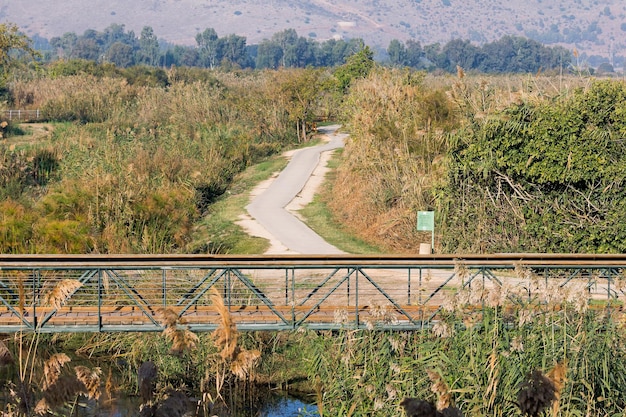
Restoring Degraded Ecosystems
Habitat restoration involves actively intervening to repair damaged ecosystems and restore their ecological functions. This strategy is crucial for recovering habitats that have been degraded by human activities.
Ecosystem restoration is a complex and multifaceted process that requires a thorough understanding of the ecological principles and the specific characteristics of the site. Restoration projects can range from small-scale efforts, such as planting native trees and removing invasive species, to large-scale initiatives, such as restoring wetlands or re-establishing natural fire regimes.
Key Restoration Techniques
Several key techniques are used in ecosystem restoration, including:
- Invasive Species Removal: Eliminating non-native plants and animals that outcompete native species and disrupt ecosystem processes.
- Native Plantings: Reintroducing native vegetation to provide habitat, improve soil health, and enhance biodiversity.
- Hydrological Restoration: Restoring natural water flows and drainage patterns to revitalize wetlands and riparian areas.
The success of ecosystem restoration depends on careful planning, implementation, and monitoring to ensure the project achieves its goals. It also requires collaboration between scientists, land managers, and community members to ensure the project is sustainable and meets the needs of local communities.
By restoring degraded ecosystems, we can create new habitats for endangered species and enhance the resilience of our landscapes.
Community Engagement and Education
Engaging local communities in habitat protection efforts is essential for long-term success. Education and outreach programs can raise awareness about the importance of conservation and empower people to take action.
Many successful conservation initiatives prioritize community engagement, recognizing that local residents are often the most knowledgeable about the land and its resources. By involving community members in planning, implementation, and monitoring, conservation projects can build local support and ensure long-term sustainability.
Strategies for Effective Community Engagement
- Citizen Science Programs: Involving volunteers in data collection and monitoring efforts, such as bird surveys or water quality testing.
- Educational Workshops and Training: Providing information and skills training to community members on topics such as habitat restoration or sustainable land management.
- Community-Based Conservation Agreements: Establishing formal agreements with local communities to protect natural resources in exchange for economic or social benefits.
Community engagement is not merely a matter of consultation; it requires building genuine partnerships based on mutual respect and shared goals. By empowering local communities to become stewards of their natural resources, we can create a culture of conservation that benefits both people and wildlife.
Education plays a crucial role in fostering a sense of environmental stewardship. By educating children and adults about the importance of habitat protection and the threats facing endangered species, we can inspire them to become advocates for conservation.
Adaptive Management Strategies
Habitat protection is an ongoing process that requires adaptive management strategies to respond to changing environmental conditions and new scientific knowledge. This involves monitoring the effectiveness of conservation efforts and adjusting management practices as needed.
Adaptive management recognizes that ecosystems are dynamic and unpredictable, and that conservation strategies must be flexible and responsive to change. This approach involves setting clear conservation goals, monitoring progress towards those goals, evaluating the effectiveness of management actions, and adjusting management practices as needed to improve outcomes.
Key Principles of Adaptive Management
Several key principles guide adaptive management, including:
- Monitoring and Evaluation: Regularly assessing the condition of habitats and the populations of endangered species to track progress and identify potential problems.
- Feedback Loops: Using monitoring data to inform management decisions and adjust practices to improve outcomes.
- Collaboration and Communication: Fostering open communication and collaboration between scientists, land managers, and stakeholders to ensure shared learning and adaptive decision-making.
Adaptive management requires a commitment to continuous learning and improvement, as well as a willingness to experiment with new approaches and adapt to changing circumstances. By embracing adaptive management, we can improve the effectiveness of habitat protection efforts and ensure the long-term survival of endangered species.
By embracing adaptive management, conservation efforts can remain effective and responsive to the challenges facing endangered species habitats in the US.
| Key Element | Brief Description |
|---|---|
| 🤝 Community Engagement | Involving local communities in conservation efforts for sustainability. |
| 🏞️ Wildlife Corridors | Connecting fragmented habitats to allow animal movement and genetic diversity. |
| 🌱 Ecosystem Restoration | Repairing damaged ecosystems for biodiversity and ecological function. |
| 📜 Conservation Easements | Legal agreements protecting private lands from development. |
Frequently Asked Questions
▼
Habitat loss is the primary driver of endangerment. Protecting habitats ensures species have places to live and breed, reducing extinction risks.
▼
Conservation easements are legal agreements restricting land use to protect natural resources, offering tax benefits to landowners while preserving habitats.
▼
Wildlife corridors connect fragmented habitats, enabling animals to move freely, find mates, and access resources, enhancing genetic diversity.
▼
Ecosystem restoration aims to repair damaged ecosystems by removing invasive species, planting native vegetation, and restoring natural water flows.
▼
Community engagement fosters stewardship, building local support for conservation efforts through education, citizen science, and collaborative agreements.
Conclusion
Protecting endangered species habitats in the US requires a multifaceted approach that integrates innovative strategies, adaptive management, and community engagement. By combining these efforts, we can enhance biodiversity, ensure the long-term survival of endangered species, and preserve the integrity of our ecosystems for future generations.

